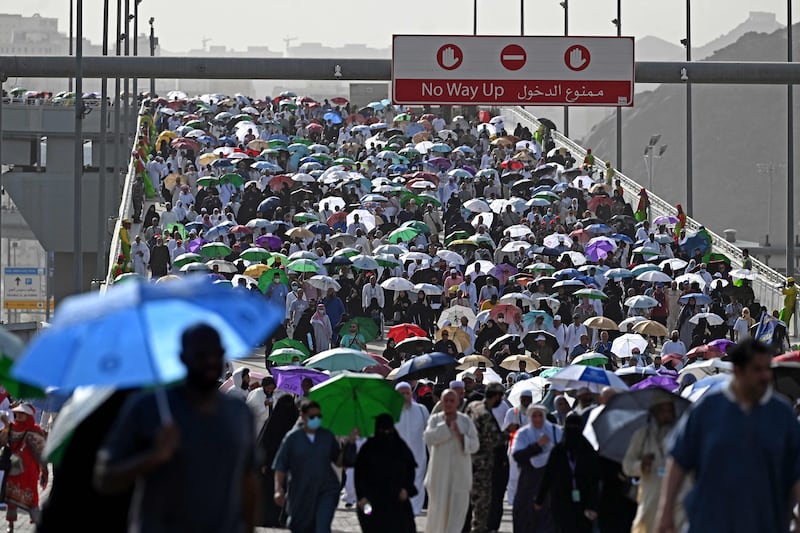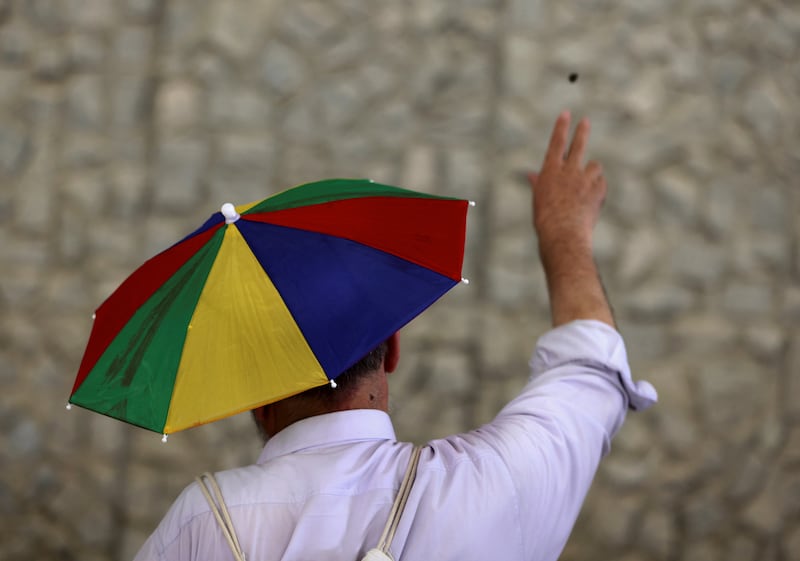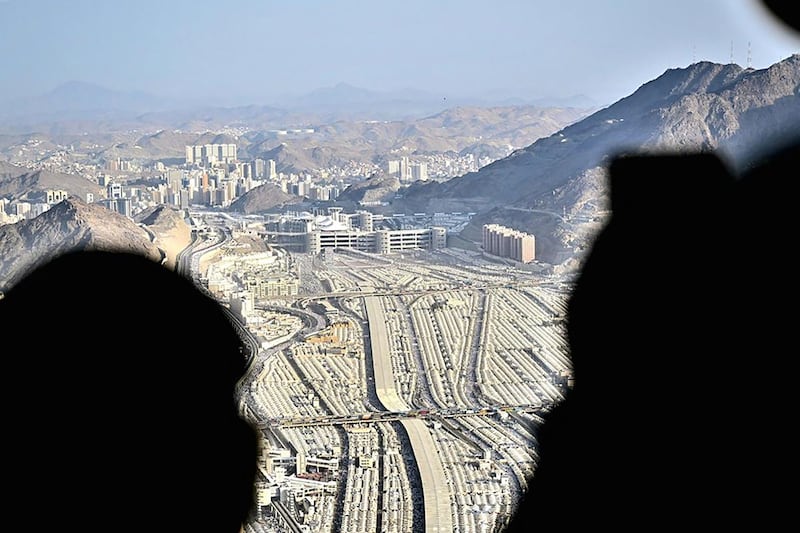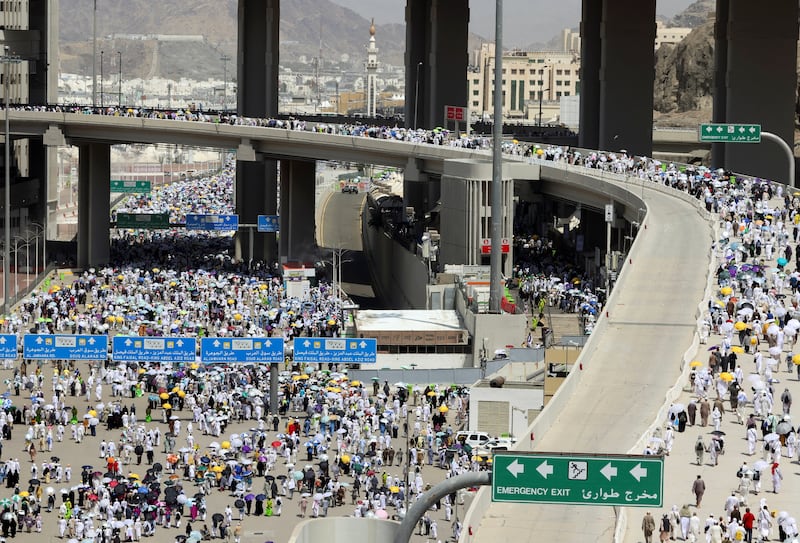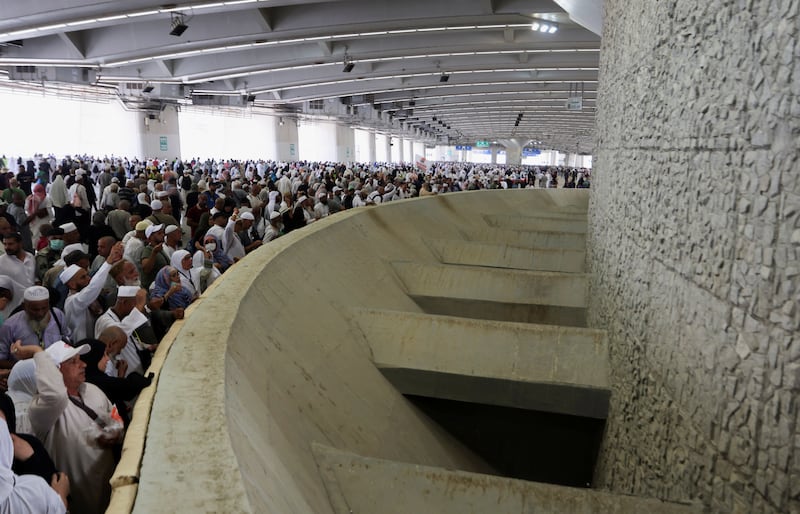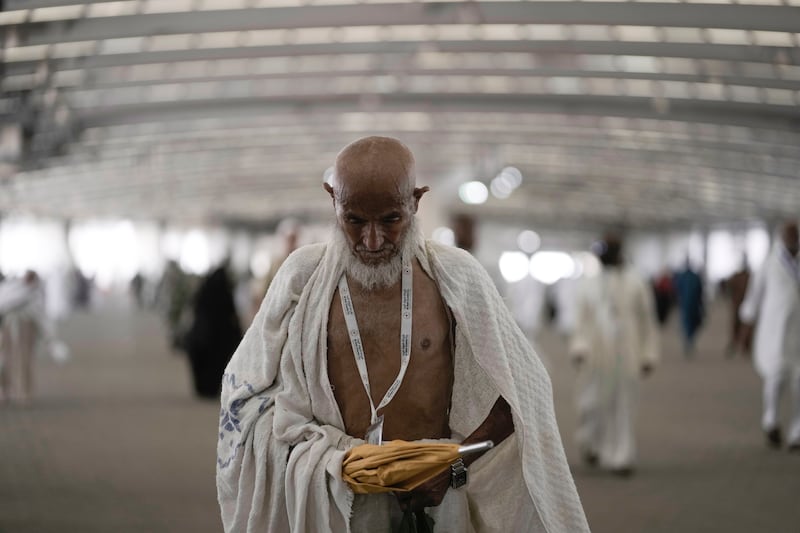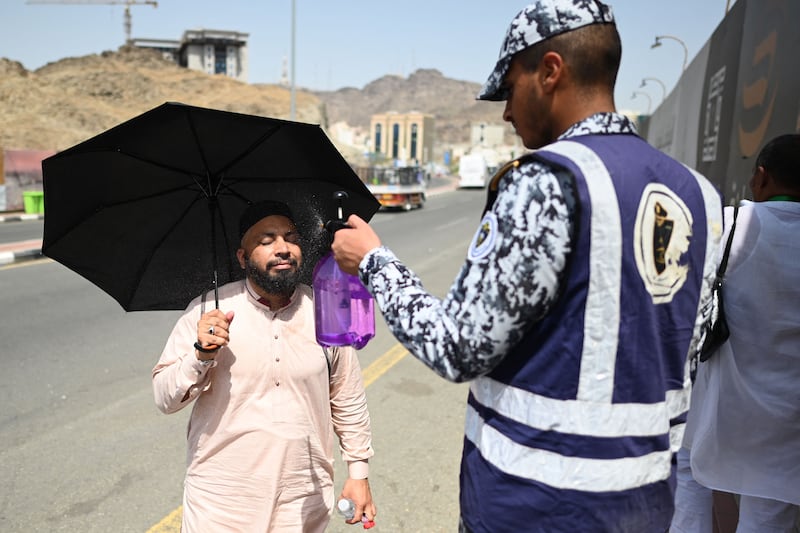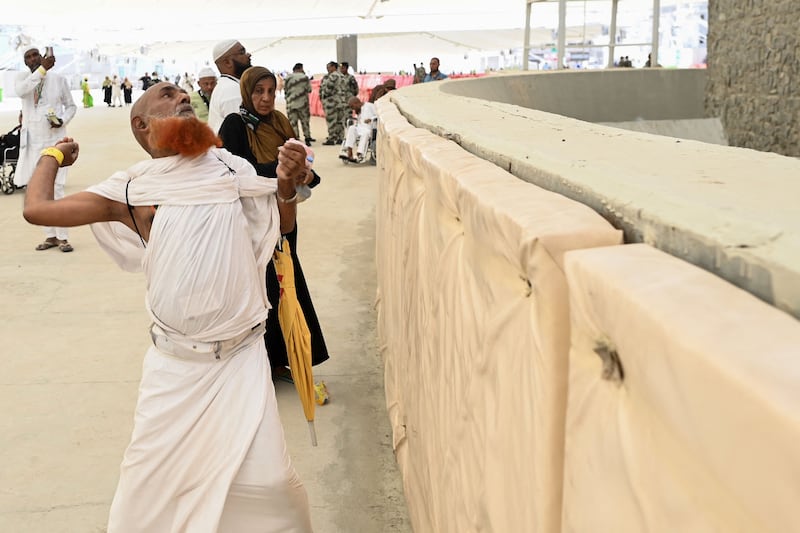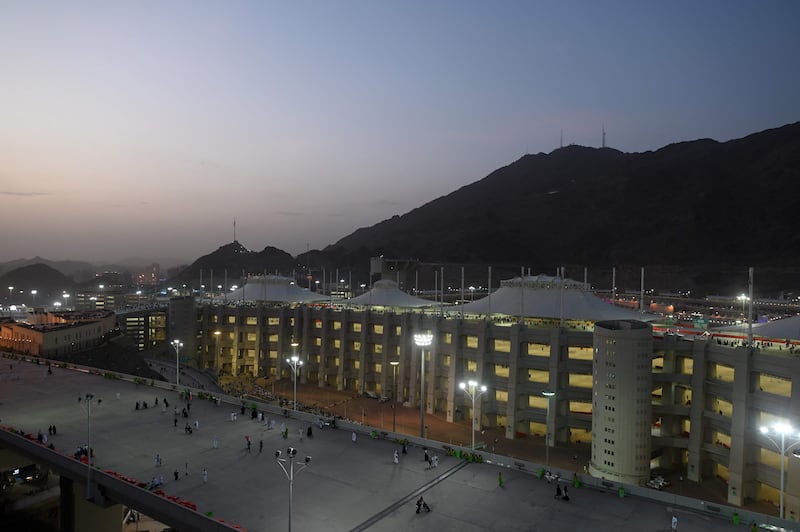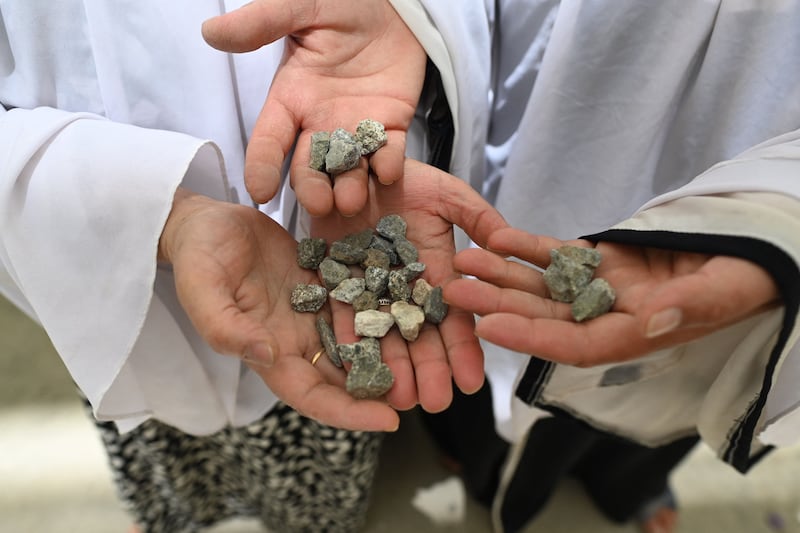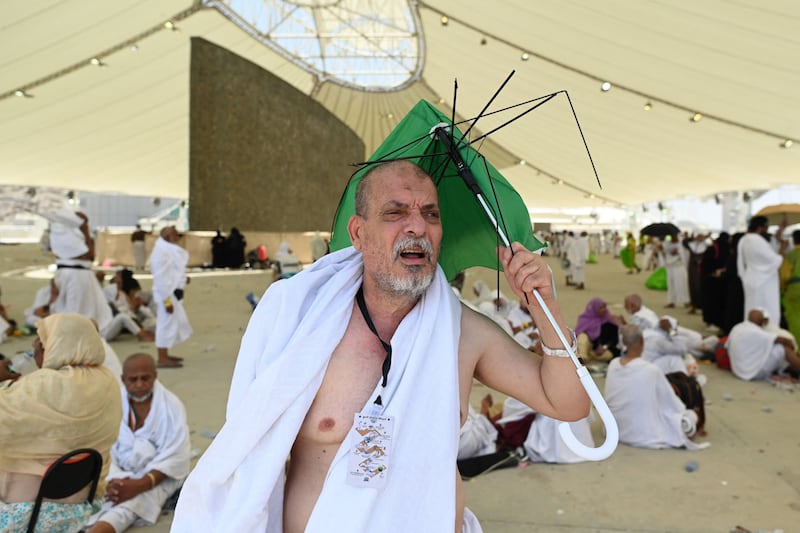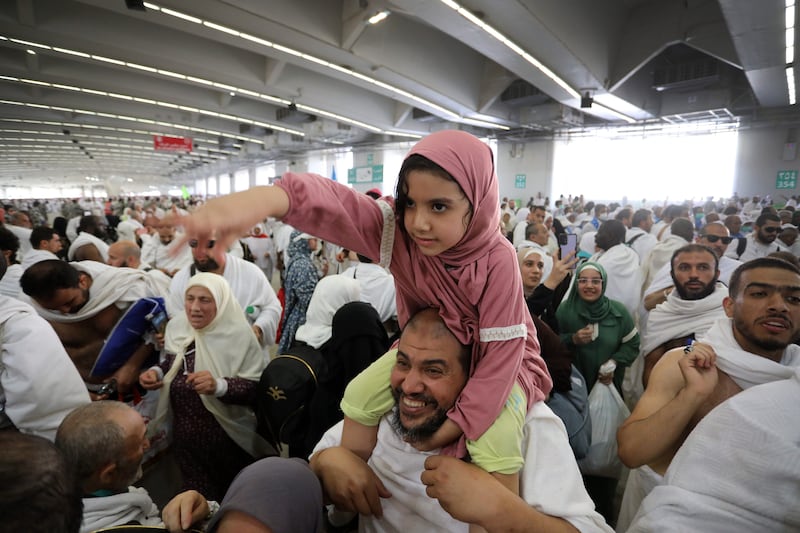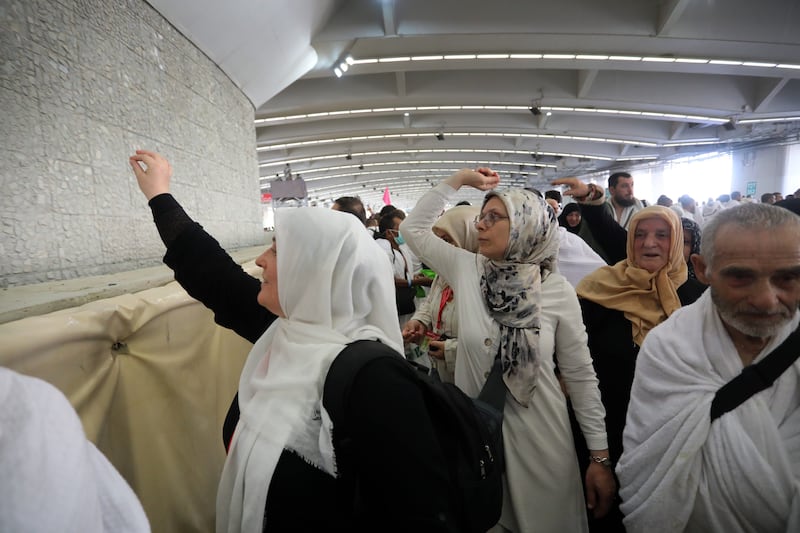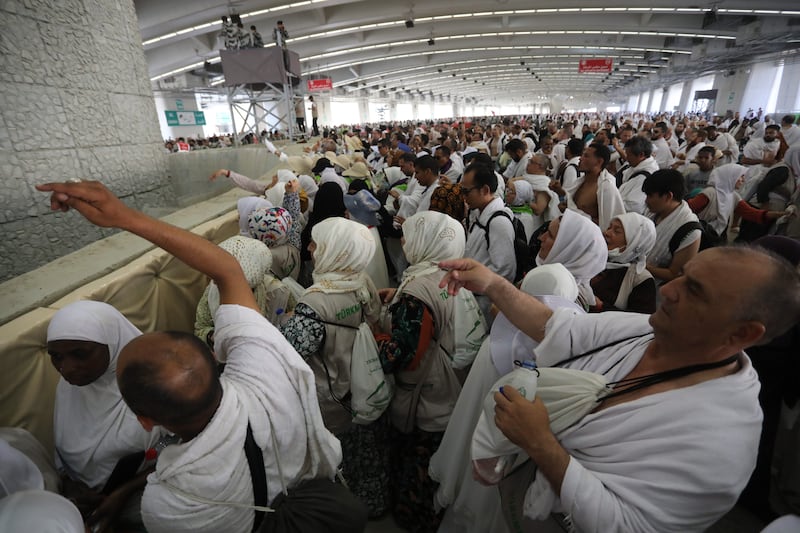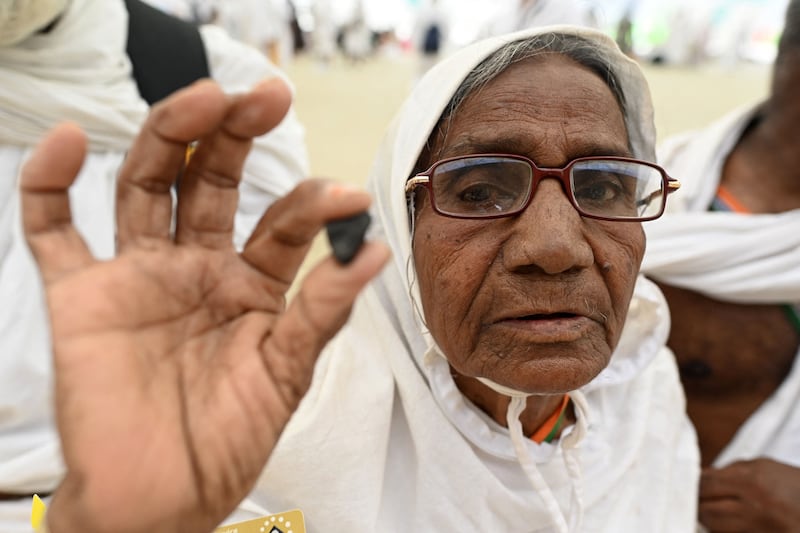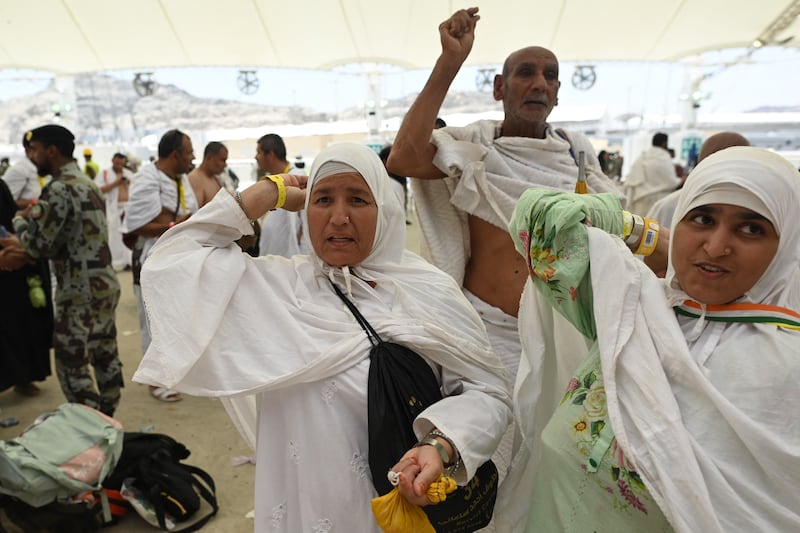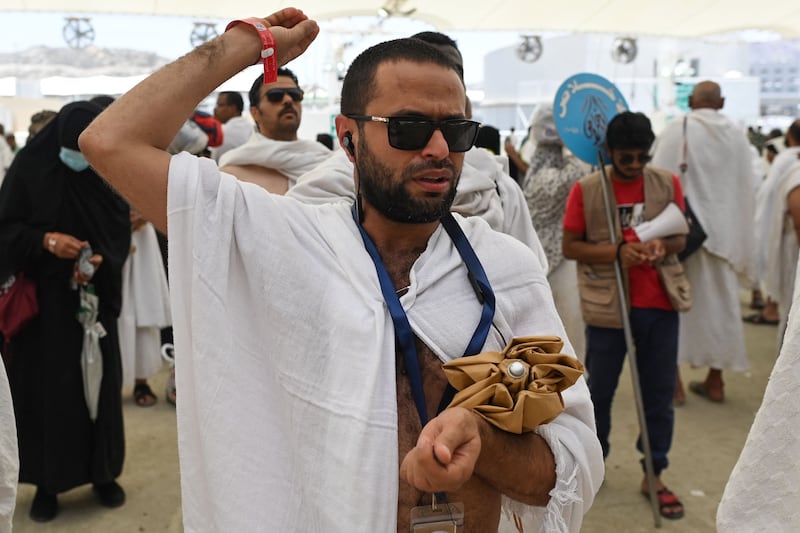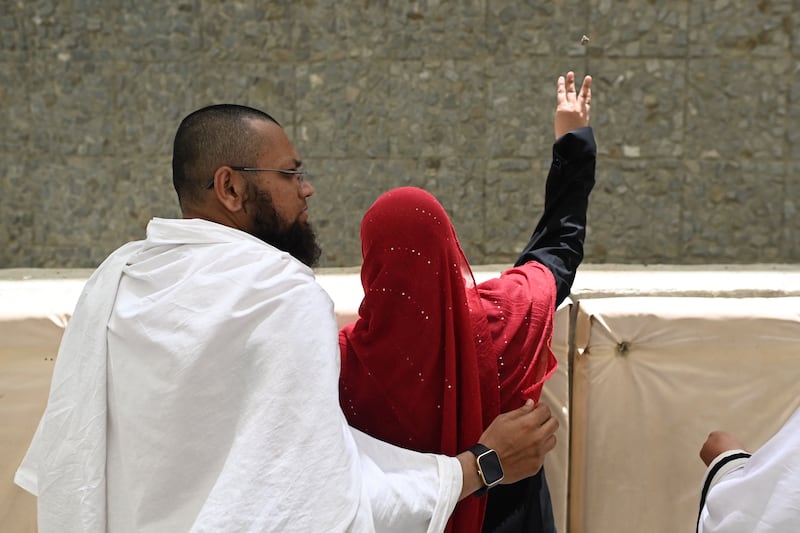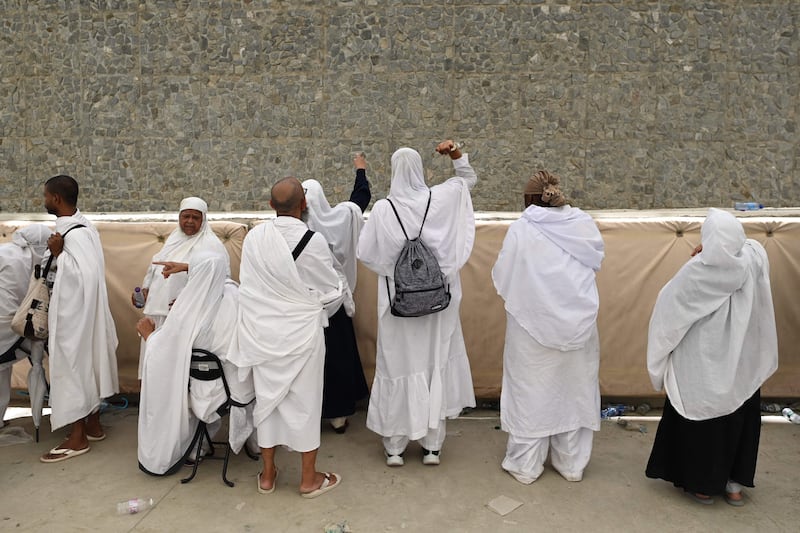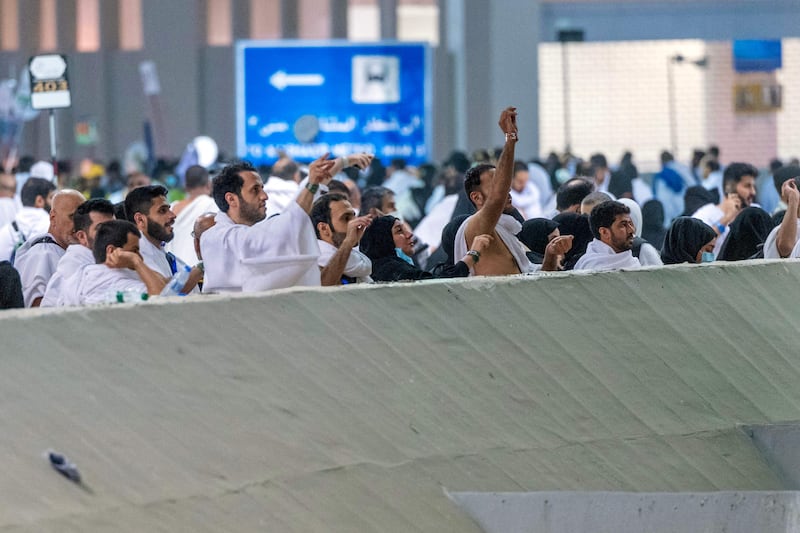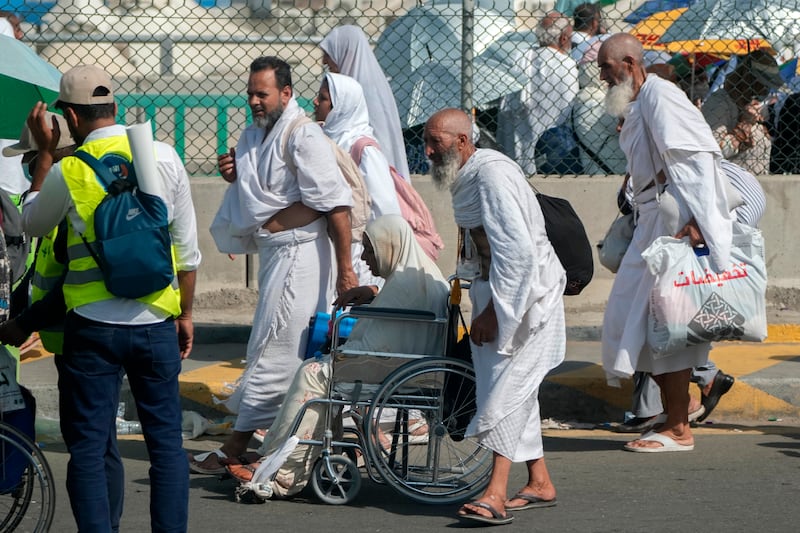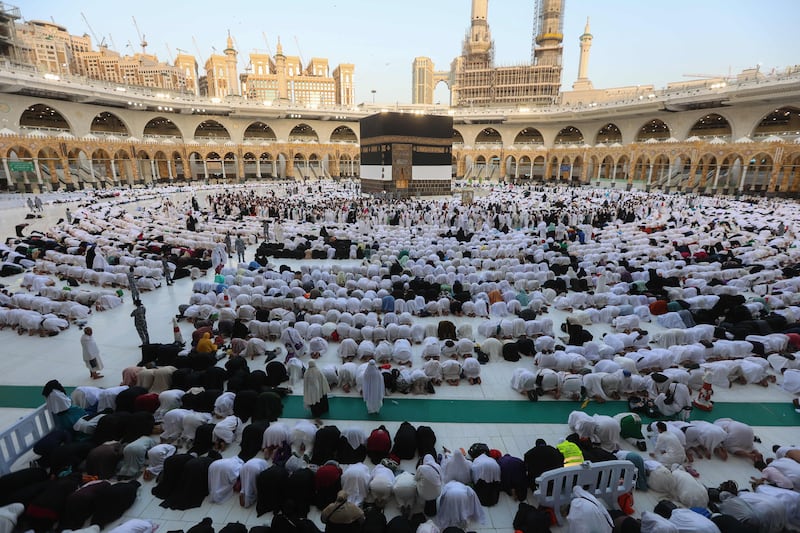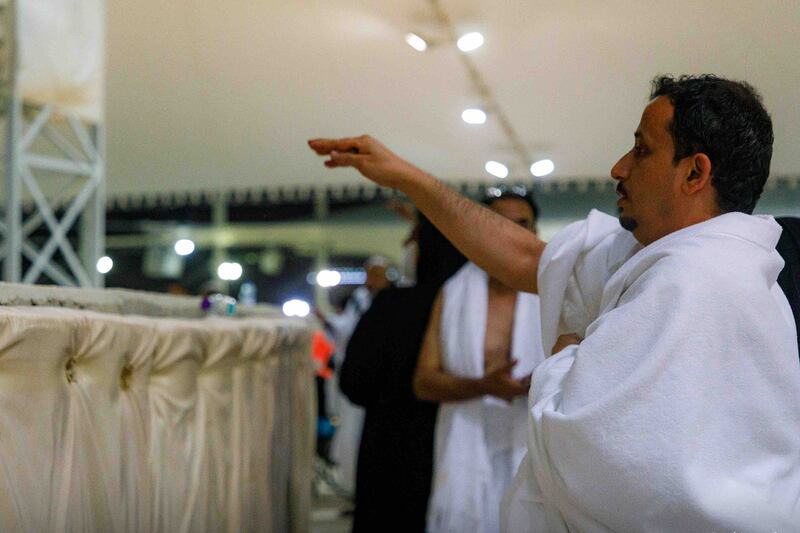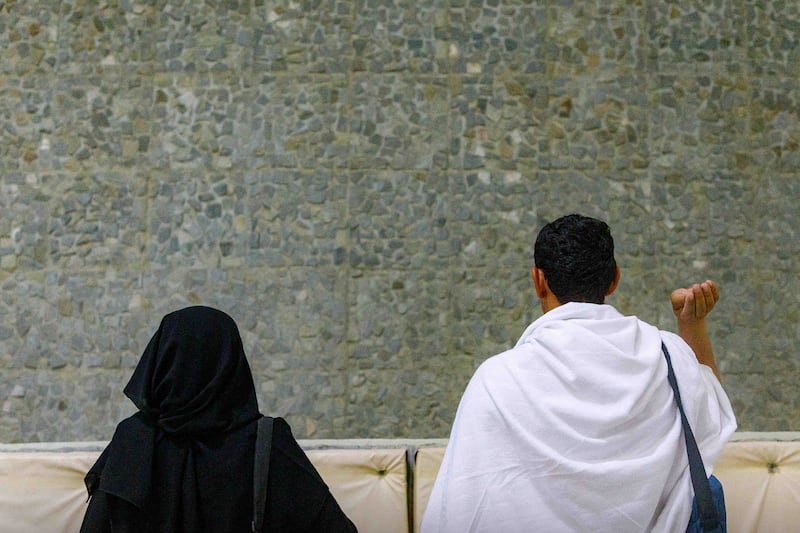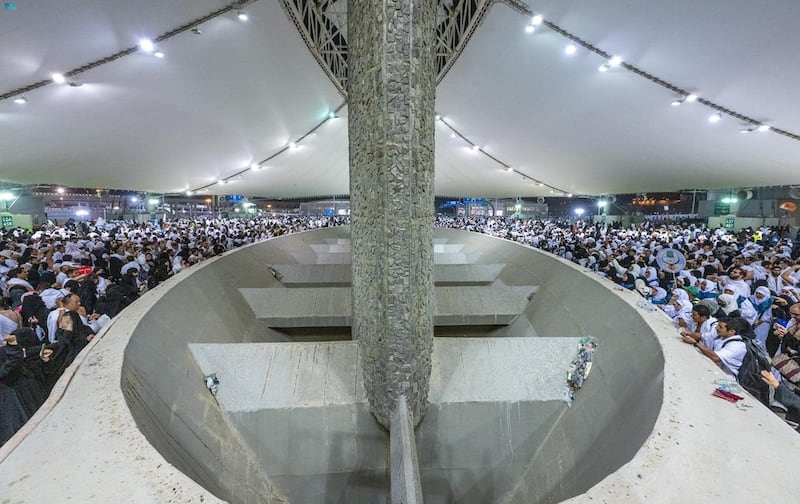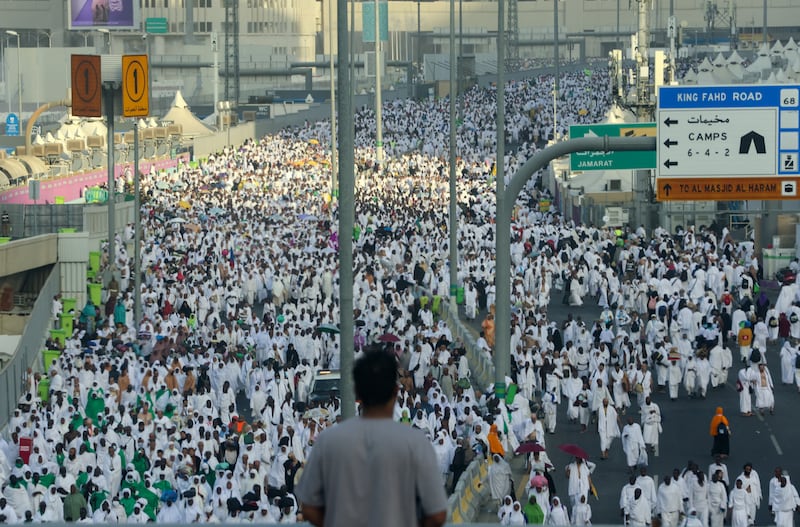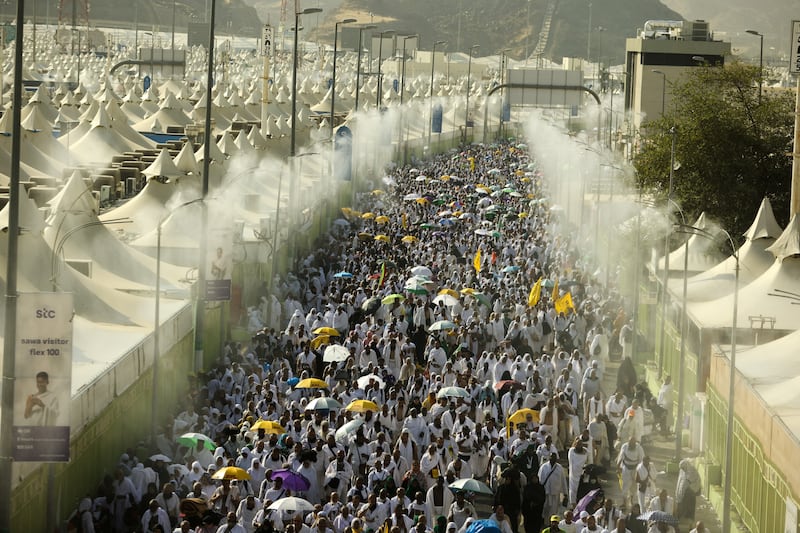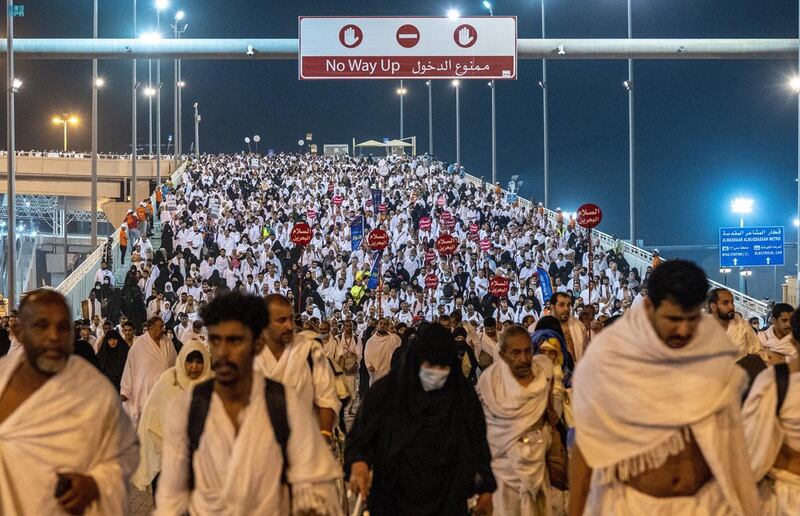Read the latest updates on the Hajj pilgrimage here
On the third day of Hajj and the first day of Eid Al Adha, around 1.85 million pilgrims from 150 countries performed the symbolic stoning of the devil in Mina before heading back to Makkah on Wednesday.
Temperatures rose past 40ºC this week – peaking at 48ºC on Tuesday – as pilgrims on Wednesday walked or took one of 20,000 buses to the Jamarat complex in Mina, which houses three pillars that represent the devil.
Every pilgrim should hit one of the three Jamarat pillars on three different occasions.
The pilgrims had collected pebbles from Muzdalifah, where they had spent the previous night under the stars after descending from Mount Arafat, where the Prophet Mohammed gave his last sermon.
The stoning of the devil represents the Prophet Ibrahim's resistance to disobeying God's command to sacrifice his son.
God then ordered Ibrahim to sacrifice a sheep instead, an act observed by millions of Muslims on Eid Al Adha.
On Eid Al Adha, the bigger of the two Eids, Muslims are to sacrifice a cow, sheep or camel, of which the majority of meat is distributed to the less fortunate.
After the sacrifice, pilgrims will move on to shaving and shortening their hair.
They will then perform sa'i, in which they walk between the hills of Al Safa and Al Marwa seven times to mark the journey taken by Hajar, the Prophet Ibrahim's wife, in search for water for her son Ismail.
Hajar then discovered running water coming from a spring near where Ismail was waiting, known today as the Well of Zamzam. Following sa'i, pilgrims will perform a final circumambulation of the Kaaba at the Grand Mosque in Makkah, known as Tawaf Al Ifadah – which means "the circumambulation of those who pore forth", in reference to the pilgrims coming from Mina.
Saudi Arabia had expanded the Jamarat area where the stoning takes place to prevent incidents such as stampedes, which have happened in the past.
In 2004, 244 people were killed, and a year later at least 360 died when several pilgrims tripped over baggage while others behind them kept pushing ahead.
Today, pedestrian bridges have been built to help maintain a smoother flow of pilgrims to the site. There have been no major incidents since 2015.

Returning pilgrims reported being impressed with this year's facilities.
“I am performing Hajj (again) after 15 years. There is a huge difference in the way (Saudi) authorities have developed the sites. Most of all, I am impressed by the security services here that are managing the large numbers. It is very impressive,” said Nada Youssef, an Egyptian pilgrim.
With Hajj falling in the heart of summer, heatstroke is a major concern. The Saudi Ministry of Health said on Wednesday that it had treated 500 cases of heatstroke and heat exhaustion.
Ministry spokesman Mohammed Al Abdali said more than 166,000 pilgrims have been provided with healthcare services so far.
No outbreaks or infectious diseases threatening public safety have been detected, he added.
The ministry has deployed 36,000 staff members 7,600 volunteers this year.
This year's Hajj also marks the first time since the Covid pandemic started that pilgrims have not been subject to restrictions.
A maximum age limit was also scrapped, allowing many elderly pilgrims to perform Hajj.
Despite the heat, and the higher cost of Hajj this year, pilgrims were grateful to be able to make the journey.
“Even if I had to sell everything to come, I would have done it", Alameer Al Omar, 52, from Egypt, said, adding: "I have been trying for three years already”.
